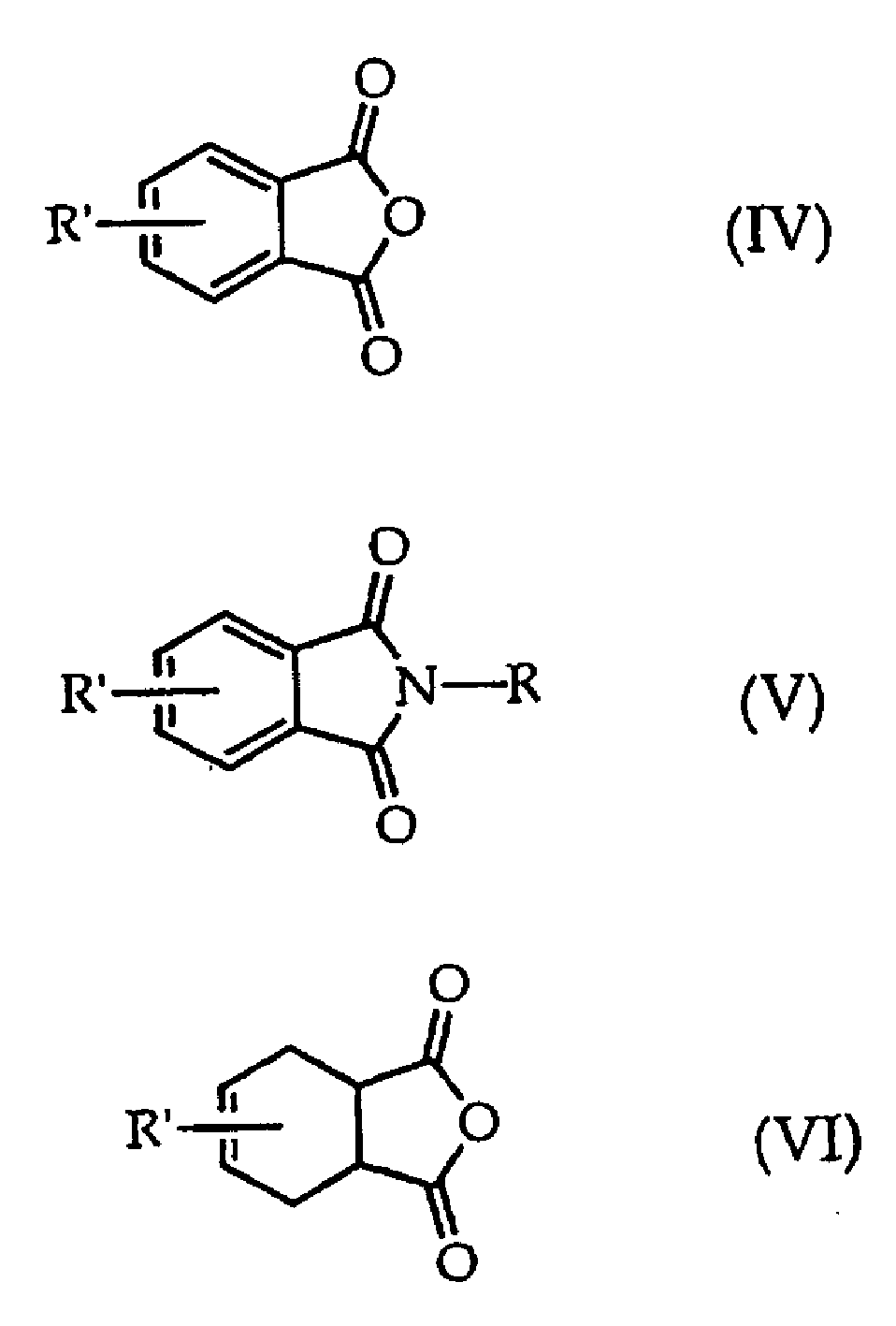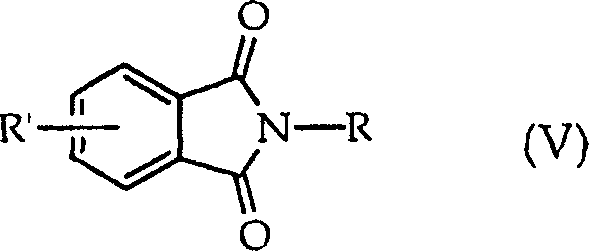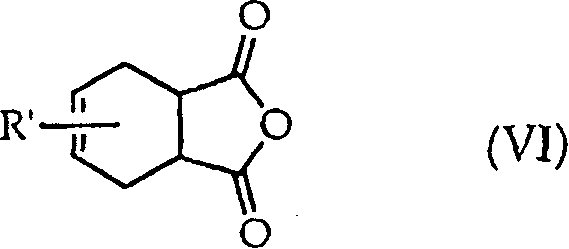Preparation of substituted phthalic anhydride, especially 4-chlorophthalic anhydride
A technology of phthalic anhydride and alkyl phthalimide, which is applied in the fields of carboxylic anhydride preparation, amide preparation, organic chemistry, etc., and can solve problems such as expensive and difficult to separate
- Summary
- Abstract
- Description
- Claims
- Application Information
AI Technical Summary
Problems solved by technology
Method used
Image
Examples
Embodiment 1
[0038] Example 1. Synthesis of N-methyl-4-chlorophthalimide (VIII)
[0039] Charge 186.5 g (1 mole) of 4-chlorotetrahydrophthalic anhydride into a suitably configured glass reaction vessel and heat to 150° C. under nitrogen protection. Methylamine gas (32 grams, 1.03 moles) was then introduced subsurface of the reaction vessel for 30 minutes. The reaction mixture was then heated at 180° C. for 3 hours. The product was then distilled to give N-methyl-4-chlorophthalimide in about 95% yield.
Embodiment 2
[0040] Example 2. Synthesis of 4-chlorotetrahydrophthalic anhydride (IX)
[0041] 156.9 g (1.6 moles) of maleic anhydride and 250 ml of toluene were added to the flask. 25 ml of toluene was removed by distillation to dry the solution. 150 g (1.69 moles) of chloroprene dissolved in 250 ml of xylene was slowly added to the flask. The total addition took 30 minutes. The resulting solution was then heated at 55°C for 3 hours. The solution was then distilled to remove the solvent. The remaining material was distilled at 160-165° C. (1-2 mm pressure) to obtain 4-chlorotetrahydrophthalic anhydride (253 g) with a yield of 85%.
Embodiment 3
[0042] Example 3. Synthesis of 4-chlorophthalic anhydride (III)
[0043] 1.5g of 4-chlorotetrahydrophthalic anhydride, 0.262g of N-methyl-4-chlorophthalimide, 0.841g of triethylamine and 20ml of water were added to a 50ml resealable stainless steel tube. The tube was sealed and heated in an oil bath at 170°C for 3 hours, then cooled to room temperature.
[0044] A small sample in the aqueous phase was analyzed by means of GCMS. The analysis revealed that 83.2% of the exchanges took place. Analysis also showed that the reaction mixture consisted of 2.4 mol% N-methyl-4-chlorophthalimide, 11.9 mol% N-methyl-4-chlorotetrahydrophthalimide, 11.9 mol % of 4-chlorophthalic anhydride (as the triethylamine salt of the corresponding diacid) and 73.8 mol % of 4-chlorotetrahydrophthalic anhydride (as the triethylamine salt of the corresponding diacid).
[0045] The aqueous phase was extracted with 20 ml of toluene containing 3 wt% triethylamine in a separatory funnel at room temperature...
PUM
 Login to View More
Login to View More Abstract
Description
Claims
Application Information
 Login to View More
Login to View More - R&D
- Intellectual Property
- Life Sciences
- Materials
- Tech Scout
- Unparalleled Data Quality
- Higher Quality Content
- 60% Fewer Hallucinations
Browse by: Latest US Patents, China's latest patents, Technical Efficacy Thesaurus, Application Domain, Technology Topic, Popular Technical Reports.
© 2025 PatSnap. All rights reserved.Legal|Privacy policy|Modern Slavery Act Transparency Statement|Sitemap|About US| Contact US: help@patsnap.com



